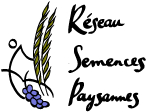Niveau juridique : Union européenne
Texte disponible en espagnol et en anglais
Texte de la question posé le 9-09-2015
The first sources of the Xylella fastidiosa bacterium have been detected in southern Italy and in Corsica and it is feared that they may spread throughout the whole of southern Europe, destroying Mediterranean crops that have existed and been cultivated for thousands of years, for example olives and vines, or ornamental plants that are widespread in the Member States in the Mediterranean region such as Nerium oleander.
In view of the spread of this dangerous bacterial disease, could the Commission indicate the number of sources that have been officially declared to date, the crops affected and their surface area, and the consignments of plant matter that have been intercepted and affected with symptoms of this disease over the past year?
Réponse donnée le 4-11-2015 par Mr Andriukaitis au nom de la Commission
As regards the presence of Xylella fastidiosa in Apulia, Italy, the national Authorities have identified 31 outbreaks (dated 31 August 2015) which according to Decision (EU) 2015/789 have to be subject to eradication/containment measures, with 3.103 plants to be removed. These outbreaks are located within the province of Lecce, and more particularly within a distance of 20 km from the border of that area with the rest of the Union territory, as well as in the adjacent province of Brindisi. However, the number of outbreaks increases as investigations progress. In September 2015, new positive cases have been further reported in the province of Brindisi, in the buffer zone surrounding Lecce. The outbreaks situated in the south of the province of Lecce are no longer considered as priority for containment measures, except in very specific locations. The Italian Authorities keep an online database (www.emergenzaxylella.it) up to date with new findings.
In Apulia, the bacterium has been detected so far in 18 plant species, including relevant species for the agricultural sector such as Olea europaea L.; Prunus avium (L.) L.; Prunus dulcis (Mill.) D.A. Webb; Rosmarinus officinalis L.; Asparagus acutifolius L.
As regards the presence of Xylella fastidiosa in Corsica, France, the national Authorities have confirmed 104 outbreaks so far, with 250 positive cases (dated 5 October 2015), detected so far in 8 plant species, mostly ornamental plants, including Acer rubrum L. and Rosmarinus officinalis L..
Lastly, a number of Coffea plants for planting have been intercepted on several occasions during the past months in the Union territory.
Lien : www.europarl.europa.eu/sides/getAllAnswers.do?reference=E-2015-012640&language=EN
